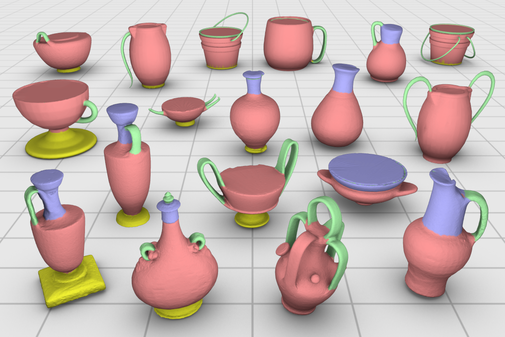Geometry processing (COMP 5115F/COMP 4900D) - Fall 2025

Outline
The course covers concepts, representations, and algorithms for analyzing and processing 3D geometric datasets. We will discuss the geometry processing pipeline that starts with the acquisition of geometric models (e.g., with laser scanning or stereo imaging) and goes all the way to the fabrication (3D printing) of the models. More specifically, we will discuss the tasks of acquisition, reconstruction, analysis, manipulation, editing, and fabrication of complex 3D models, and representations such as triangle meshes and implicit functions. The techniques covered have applications in computer graphics, engineering, medical imaging, and many other areas, while the field is still the subject of much active work and presents opportunities for future research.
Topics
- Surface representations and mesh data structures
- Registration and surface reconstruction
- Mesh smoothing and fairing
- Mesh simplification and compression
- Parameterization
- Mesh editing and deformation
- Shape analysis, including AI-based methods
- 3D printing and fabrication
Learning outcomes
At the end of this course, students will be able to:
- Summarize the main problems and solution methods in the field of geometry processing.
- Identify the most suitable techniques to address specific problems in geometry processing.
- Implement algorithms for processing of polygonal meshes and apply them to specific datasets.
Pre-requisites
For COMP4900D: COMP 2402, COMP 2404, MATH 1007, and MATH 1104.
For COMP5115F: Experience with computer programming, familiarity with linear algebra (vectors, matrices, etc.), and eagerness to study mathematical concepts and algorithms. Familiarity with computer graphics and/or computer vision and/or image processing are a plus but not required.
Recommended book
M. Botsch, L. Kobbelt, M. Pauly, P. Alliez, and B. Levy, "Polygon Mesh Processing", A K Peters/CRC Press, 2010.
We will follow this book closely in the first part of the course. Each topic will also have additional references and suggested readings. The second part of the course will use papers from journals/conferences as references.
You can find the outline, notes, references, and assignments for the course in Brightspace (the course will be activated near the beginning of the term).
Lectures
Mondays and Wednesdays, 1:05pm-2:25pm (please check the calendar for the location).
Evaluation
The grade will be based on the presentation of a paper (for COMP 5115F only), assignments, a final course project, and an exam. The idea is that the paper presentation and assignments will all converge to the same goal: the chosen paper will be ideally on the same topic as the project, while the assignments will set up the programming environment for working with 3D geometry. The project will consist in the implementation and evaluation of a geometry processing technique, followed by the submission of a report, code, and an analysis of the results. The exam serves as a review of the course content covered in the lectures.
Instructor
Oliver van Kaick.
You can e-mail me at Oliver.vanKaick at carleton dot ca for any questions regarding the course.